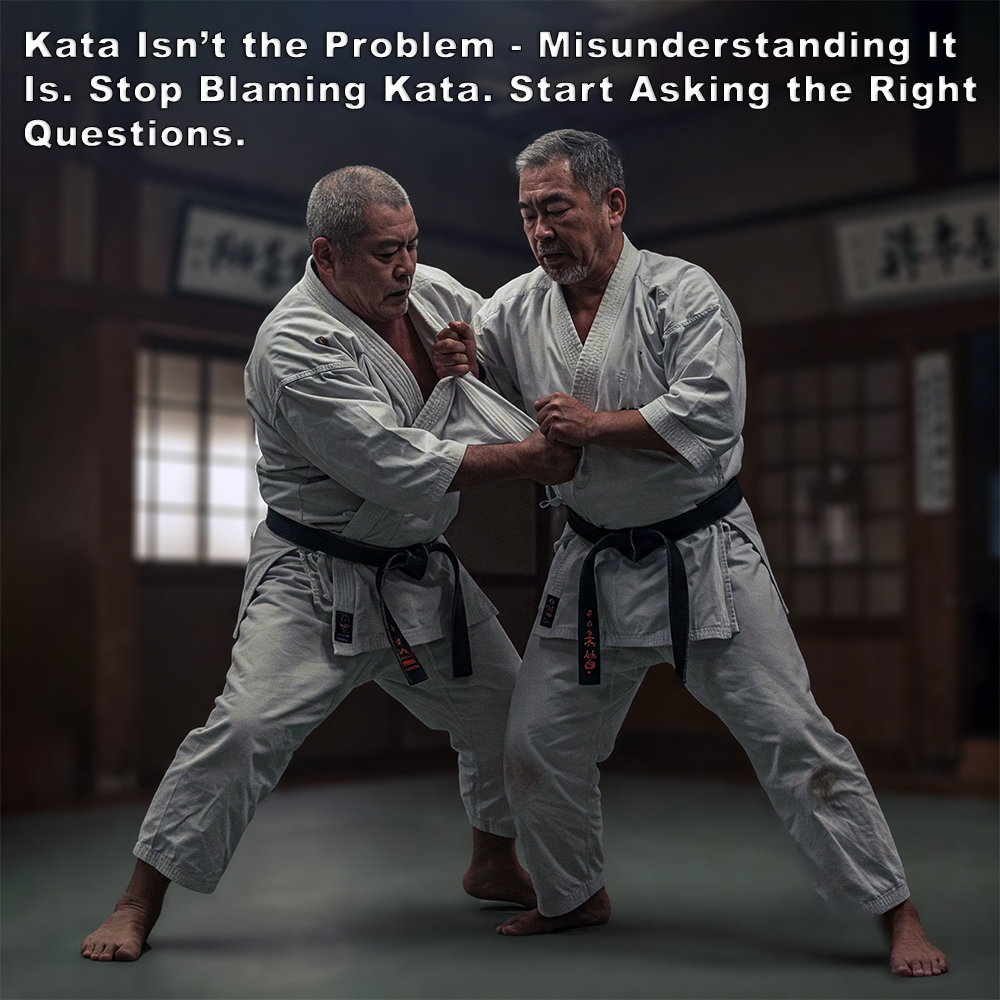
(Approx 2 minute 50 second read)
I never thought I’d enjoy writing articles as much as I do, but some of the comments are so incredibly misinformed they keep me fired up and ready to write again.
.
One comment from a Kyokushin shodan sums up, I think, what any serious practical karate enthusiast knows – how little some people actually understand.
.
His comment said that: “That’s the problem with kata, it’s a pattern, it never changes. I can say with 100 percent certainty that kata is a suboptimal method to prepare you for combat and it’s that reason why even skilled karate fighters in combat sports don’t use kata as a primary form of preparation.”
.
Oh crikey, here we go again.
.
It’s a comment I’ve heard in many different forms over the years. But it’s also based on a total misunderstanding of what kata is for – and how it was meant to be used.
.
Yes, kata is a fixed pattern. It doesn’t change when performed as a solo representation. Kata is a structured tool – a way to record and transmit fighting principles, tactics, and movements from teacher to student, generation to generation. The form is fixed, but the application is anything but.
.
To say kata is a “suboptimal” method for combat preparation is only true if you believe kata alone is preparation for combat. But that was never the case in classical training.
.
Training included kata, yes – but also two-person drills, impact training, conditioning and more. Kata was the skeleton – the underlying structure – used as a way to remember the two-person drills when training alone.
.
The problem isn’t kata – it’s the way it’s often taught today, without context or function. This can lead those unfamiliar with its deeper purpose, including some focused solely on combat sports, to dismiss its value.
.
And no, combat sports fighters don’t use kata as primary preparation. Nor should they. Sport fighting and traditional combative training have different aims. One is built for rules, rounds, and weight classes. The other is for close-range, chaotic encounters where escape and personal safety matter far more than points and knockdowns.
.
Expecting kata to prepare you for the ring is like expecting a map to teach you how to drive – you can have the directions, but you still need practice on the road.
.
The problem with kata isn’t that it’s outdated – it’s that it’s misunderstood. When kata is properly unpacked and trained with pressure, realism, and intent – it’s an efficient training method. But if you don’t understand it, it becomes exactly what this commenter sees: a stiff, outdated ritual.
.
If you want to judge kata fairly, you need to stop looking at the surface – and start digging into the layers underneath.
.
I wish I had a dollar for every time I have said this – and this is hugely important.
Are you listening now? Then we’ll begin. You do NOT fight with kata.
.
Kata is a record of principles, tactics, and movements, which you certainly don’t fight with from beginning to the end.
.
STOP looking at the techniques alone.
.
Okay I’ll stop with the sarcasm.
.
Kata is a record of the creator’s methods, ideas, and a theme he had in mind, each of which can be extrapolated when needed.
.
And while he listed his credentials – shodan in Kyokushin, and further coaching experience – it’s worth pointing out that rank doesn’t always equal understanding.
.
Many people with ‘experience’ misunderstand kata simply because they’ve never been taught its functional side. If their exposure was limited to rote memorization without application, it’s no surprise they’d see kata as outdated, especially when viewed through the lens of modern combat sports training.
.
But that isn’t a flaw in kata – it’s a flaw in how it’s taught and understood today.
.
The mistake is not asking questions – and stopping at the surface.
.
Kata isn’t the problem. What’s been lost in translation – and teaching – is the understanding. And that’s exactly why we need to keep having these conversations.
.
.
Written by Adam Carter
